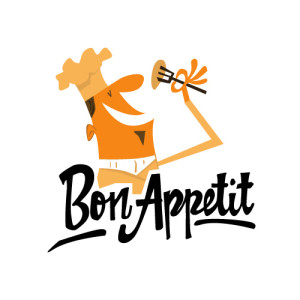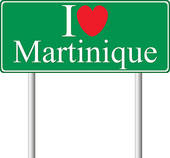 Although I am embarrassed to admit it, I had never heard of an IPA (or IP-Yay, as one of my classes calls them) until May, 2013 when I attended a presentation by my state’s foreign language association. Because our state was including a student progress measure on our teacher evaluation system for the first time, our association took an active role in encouraging us to use a measurement of student proficiency, rather than as assessment of vocabulary/grammatical accuracy to document our students’ learning. Although I had been somewhat familiar with various proficiency descriptors, I had never designed my instruction to increase and assess student proficiency until attending this important session. However, as the result of this presentation and two others that I subsequently attended, I made dramatic changes to my instructional and assessment strategies in order to encourage student proficiency, rather than simply grammar and vocabulary accuracy. While I read what I found online about IPA’s, I did not have a good overall understanding of the specifics of this type of assessment until I finally stumbled across the manual found here: http://www.actfl.org/publications/guidelines-and-manuals/implementing-integrated-performance-assessment . While I make some modifications based on my own teaching situation and students’ needs, I have relied heavily on this manual when developing my own assessments. However, I am no expert in this process and have not received any specific ACTFL training. The ideas expressed here reflect only my current understanding of proficiency-based assessment. What I can say for sure is that the transition from traditional tests to IPA’s, has improved student learning in my classes more than any other change I’ve made during my 25 year teaching career.
Although I am embarrassed to admit it, I had never heard of an IPA (or IP-Yay, as one of my classes calls them) until May, 2013 when I attended a presentation by my state’s foreign language association. Because our state was including a student progress measure on our teacher evaluation system for the first time, our association took an active role in encouraging us to use a measurement of student proficiency, rather than as assessment of vocabulary/grammatical accuracy to document our students’ learning. Although I had been somewhat familiar with various proficiency descriptors, I had never designed my instruction to increase and assess student proficiency until attending this important session. However, as the result of this presentation and two others that I subsequently attended, I made dramatic changes to my instructional and assessment strategies in order to encourage student proficiency, rather than simply grammar and vocabulary accuracy. While I read what I found online about IPA’s, I did not have a good overall understanding of the specifics of this type of assessment until I finally stumbled across the manual found here: http://www.actfl.org/publications/guidelines-and-manuals/implementing-integrated-performance-assessment . While I make some modifications based on my own teaching situation and students’ needs, I have relied heavily on this manual when developing my own assessments. However, I am no expert in this process and have not received any specific ACTFL training. The ideas expressed here reflect only my current understanding of proficiency-based assessment. What I can say for sure is that the transition from traditional tests to IPA’s, has improved student learning in my classes more than any other change I’ve made during my 25 year teaching career.
Based on my own experience, here are the steps that I suggest when designing an IPA:
- Decide what you want to assess. Based on the principle of backwards design, writing the summative assessment is one of the very first steps in developing a unit plan. Therefore, I write my IPA before developing any of my lesson plans for the unit. I recently heard a speaker say, “You teach what you test.” While this seemed counter-intuitive to me at first, as I thought about it more it made perfect sense. When we choose how to assess our students, we are demonstrating what we wanted them to learn. If it’s not on the “test,” we probably didn’t think it was that important. In a proficiency-based classroom, that means that we assess our students’ ability to communicate across the modes of communication. So, the first step in designing an IPA is to choose a benchmark for each mode based on the ACTFL Can-Do Statements (http://www.actfl.org/global_statements ). Note: The bold print statement is the benchmark, and the statements which follow (preceded by a box) are examples. Sometimes I choose one of the examples, but other times I create my own based on the theme I have chosen for my unit.
- Choose an authentic written text. Based on the interpretive reading benchmark I have chosen, I find an authentic, culturally-rich text that will enable the students to demonstrate that they have achieved the benchmark. The type of text that will be appropriate depends on the proficiency-level of the students. Novice learners are highly dependent on using visuals when interpreting so I use infographics, picture books, brochures, catalogues, or comic strips for these students. Note: Try using Google Images, rather than just Google when searching for texts for these students. Here are some other resources I use for Novice learners:
http://www.iletaitunehistoire.com/genres/documentaires
https://www.envolee.com/fr/catalogue/1/8-du-plaisir-a-lire (Although there is a fee for downloading these texts, I have found this to be money well spent.)
http://www.scholastic.ca/education/envol_en_litteratie/downloadablebooks.html (Also worth the fee)
While Intermediate Low to Mid learners are able to interpret lengthier texts, they are often unable to understand authentic texts written for their developmental age (in language programs that begin in high school). These students usually enjoy tapping into their “inner child” by reading magazine articles and online material written for younger students. I find it helpful to use a children’s search engine when researching materials for these students. Here are a few that I’ve used:
http://www.takatrouver.net/takamag/index.php
http://www.coolgo.fr/
http://www.kidadoweb.com/
http://www.lespagesjuniors.com/
http://www.webjunior.net/
When possible, I use articles from authentic children’s magazines for interpretive tasks. These materials are often more visually rich than online materials. I have found several relevant articles for French 2 students in Astrapi, while I prefer Okapi for my French 3 students. My level 4/5 students are able to interpret the texts written for teenagers in Phosphore.
- Write the interpretive reading task. Once I have chosen the authentic text, I write the actual assessment based on the template found here: http://www.actfl.org/publications/guidelines-and-manuals/implementing-integrated-performance-assessment . While I think the template is self-explanatory, I thought I’d share a few tips for each section.
#1: I write the Key Word Recognition section by typing about the English translation of about 10 words/phrases from the text that I think the students will already know, based on prior instruction or the activities in the unit being assessed. Note: Sometimes I “cheat” here to introduce a new vocabulary word that the students will need in order to interpret the text. I do so by writing the entire phrase in which the word appears. When searching for the phrase in the text, they will be able to use the context to determine the meaning of the targeted vocabulary item.
#2: Main Idea. Most of my students don’t write the main idea until they have completed the Supporting Details section. It would probably make sense to move this section accordingly when typing an IPA. When assigning a literary text, I change the wording here so that the students are writing a 2-3 sentence summary, rather than a main idea.
#3: Supporting Details. This is the core section of the task, where students will really have a chance to show you what they know. Remember that these are statements, not questions. The students are not providing answers, they’re writing details to show that they understood more than the main idea the text. I try to give them a chance to really show off here by writing very general statements, so that they can use as many details as possible. Although the template suggests writing 8 statements (3 of which will be distractors) I often write more based on the length of the text. I have noticed that I often learn more about my students’ comprehension from their errors on the distractors than on the details they provide for the “correct” statements. Because most of my texts are informational in nature, the students can use their background knowledge to provide logical answers, without actually understanding the text. However, when they provide a detail for a distractor, I know that they are using what they know rather than what they’ve read. Note: I generally omit the requirement that the students “write the letter of the detail next to where it appears in the text.” I did not find that this step was difficult to assess and didn’t supply me with any additional information about what the students understood.
#4: Organizational Features. In the interest of full disclosure, I have to admit that I sometimes omit this section. While I recognize that identifying the organizational structure is an important top-down process, I do not feel that assessing this skill provides much additional information about the students’ comprehension of a text. For novice learners who are interpreting infographics or other simple texts, the organization is so obvious that the students often see this step as needless busywork.
#5: Guessing Meaning from Text. My students consistently score the lowest on this section of the interpretive task. As suggested in the ACTFL manual, I type the entire sentence in which the word is located, as well as provide a description of where in the text the sentence is located. The students’ often respond with an English word that is similar in spelling, but not meaning to the French word. This indicates to me that they are not using the context clues to infer the meaning of the word. Because of the difficulty of this task, I usually include more than three items in this section so that students have a greater opportunity for success. In addition, I’ll continue to encourage them to rely more on context for these items.
#6: Inferences. The ACTFL template gives great examples of appropriate inference tasks. Make sure to note that for novice learners it’s appropriate to give a choice of possible inferences and have the students choose which one is supported by the text and provide justification. When I began using this template, I was pleasantly surprised by how much this section demonstrates the depth of the students’ comprehension.
#7: Author’s Perspective. While I think this task is very important for my upper level students, it is often not applicable for the types of texts that Novice learners read. Although I suppose we could say that the perspective of the “author” of a menu is that the food is delicious, I don’t think requiring the students to explain this is a good use of their time or mine.
#8: Comparing Cultural Perspectives. I again rely heavily on the suggestions given in the ACTFL template for this task. I have found, however, that the students need more specific directions for this section. For example, I have had to explain that “It would be written in English.” Is not an acceptable response to the question regarding how the article would be different if it was written for an American audience. I have also been quite liberal in the type of answer that might demonstrate a perspective, rather than just a product or practice. While this distinction is an important one, Novice learners are sometimes not able to even identify the relationship between practices and perspectives in their own culture, let alone a culture about which they know very little.
#9: Personal Reaction. I generally omit this section from the interpretive task. Because the instructions state that the response should be in the target language, I consider it a presentational rather than an interpretive task. I do consider this prompt, however, when I design the presentational task for the unit.
Although it is writing the interpretive task is the most time-consuming part of designing an IPA, I’m only a little bit embarrassed to say that I think it’s kind of fun. I like the creativity involved in writing the tasks and always look forward to seeing what the students are able to achieve.
- Choose an authentic recorded text. In my initial research on IPA’s, I was surprised to find out that most authors advocated using either a reading OR a listening interpretive task rather than both. Even the ACTFL IPA manual has very little to say about listening comprehension. In my opinion, we do a great disservice to our students if we do not adequately address the importance of interpreting oral texts. As a matter of fact, I believe that of all communicative tasks, this is the one for which the students need us the most. They may be able to use Google Translate to interpret written texts or provide comprehensible written messages, but they will not be able to understand what they hear without being exposed to a wealth of authentic recorded texts in an instructional setting. For these reasons, I nearly always include both an interpretive reading and an interpretive listening task on my IPA’s. When selecting an appropriate “text”, I rely almost entirely on YouTube videos. Because Novice learners need a lot of visual support, I often use cartoons with them. Trotro l’Ane, Petit Ours Brun, Caillou and Peppa Pig are a few cartoon characters whose videos I’ve used successfully with Novice learners. More proficient students are able to interpret amateur videos made by French teenagers on a variety of topics or on authentic instructional videos. My French 4/5 students can generally interpret news videos related to the topic of study.
- Write the interpretive listening task. Unfortunately, the ACTFL IPA manual provides very little direction when it comes to interpreting an oral text. While teachers are encouraged to use the same interpretive template to assess both reading and listening, this would not work very well given the constraints of my teaching situation. Because I have only 8 computers in my classroom, students circulate between the reading and listening sections of the IPA. Therefore, I need to limit the amount of time that an individual students spends at the computer. The nature of the tasks on the Interpretive template would require the students to listen to the videos in their entirety several times, which would be extremely time-consuming without necessarily demonstrating deeper understanding. In addition, many of the sections on this template would not adequately address listening comprehension. It goes without saying that any word or phrase that is written in the target language on the IPA becomes a reading rather than a listening assessment. While I will continue to evolve in my understanding regarding listening comprehension, I am currently relying heavily on English comprehension questions for the videos I include in my IPA’s. Although I write the questions in the order in which the students will hear them (to save time), I try to vary the types of questions in order to assess the various levels of comprehension that are included in the ACTFL interpretive template. In addition to informational questions about what is happening in the video (supporting details), I also ask the students to provide a main idea or summary after watching the video. When possible, I will also include a few items which require the students to infer the meaning of a new word, based on the context of the sentence (with the understanding that the inclusion of the written sentence will negate the role of listening). When appropriate, I might also include an inference or cultural context question. Note: because some of the cartoon videos might not come from the target culture, they may not provide a cultural context. However, I consider them to be authentic in that the French translation was produced for a target culture audience.
- Write the interpersonal task. Based on my observation, I think this may be the area in which we have the greatest opportunity for growth. I think that many of us are labeling oral performances as interpersonal when there is little or no negotiation of meaning. It seems to me that if a student knows in advance what s/he or the other speaker will say, it is not an interpersonal task. In addition, if a speaker is required only to give answers, rather than also questioning, the task cannot be considered interpersonal. While Novice Low to Novice Mid learners can only communicate using memorized phrases, this does not mean that they should be expected to reproduce memorized dialogues. For these learners, I often rely on an information gap types of activities to provide contextual support while at the same time allowing for unscripted language use. For example, students might be given a series of pictures and asked to discuss them in order to ascertain whether each one is the same or different. This type of activity allows for a continuum of proficiency (some will use single words, while others will use simple sentences) and requires each student to both ask and answer questions. As students become more proficient, they can manage more open-ended tasks such as discussing familiar subjects such as preferences, activities, family, eating habits, etc. While the actual task will be highly dependent on the theme of the unit, the benchmarks in the ACTFL manual provide many good examples. Because my upper level classes are organized around a novel or film, rather than a broader theme, I often assign role plays for interpersonal speaking tasks. Rather than asking them to replay a scene from the film/book, I create a hypothetical situation (which could have, but did not happen) and ask the students to role play the situation. Although I might allow them advance practice in class, they will not be assigned a role or a partner until I call on them to be assessed. Note: With more open-ended tasks, I think it’s important to give the students a minimum time limit. While students might prepare some of their statements in advance, based on the topic, I think it’s the “stretch” that takes place when they run out of things to say that increases proficiency in this skill.
- Write the presentational task. Most of my IPA’s include a written presentational task, but not a spoken one. Because I assess their interpersonal skills, it would often be repetitive to also assess their presentational speaking, as they would use many of the same vocabulary and structures. In addition, multiple class periods are required to listen to 30 students present on a particular topic, which I have determined is not the best use of my limited instructional time. When developing written presentational tasks, I again rely heavily on the wording used in the IPA manual. Thus, Novice Low-Mid students write lists and Novice High – Intermediate Low students write hypothetical blog posts, e-mails, etc. in which they express their personal experiences as they relate to the theme. Ideally, this task will be dependent on the interpretive task. For example, when my French 1 students read an authentic post by a family looking for an au pair, they wrote a similar post for their own family. Likewise, after my French 2 students read a magazine article about a Canadian student’s typical day, they wrote a magazine article about their own typical day. Because many of my upper level students will be taking the AP test, I rely heavily on prompts requiring persuasive speech that is expected on this exam. As with the role plays, I often ask them to write a letter from character in a film/novel to another, persuading him/her to perform some action. Given the nature of each of the Presentational context, in most cases I assign a rough draft of the task as a formative assessment. I then provide feedback on this draft before having them produce a final draft on the IPA.
Whew, I think it took longer to write about it than it does to actually write an IPA! If you’d like an additional example (or if you’re using the French 2 unit I described in my previous post), here’s the IPA developed for my current French 2 unit.School Unit IPA
As usual, I’d love to hear how IPA’s are working for you as well as any suggestions that you have!
 Although I had intended to include vocabulary and structures related to chores in my French 1 unit on the house, I ended up having to abbreviate the unit in order to administer the IPA before Spring Break. I didn’t want to totally omit this part of the unit, however, so I’m incorporating this vocabulary and structures into a mini-unit that we will do when we come back to school. I thought this unit was especially important because the house unit was very heavy on vocabulary and very light on sentence structures. Although I was happy with my students’ performance on the IPA, they were able to complete those tasks by relying primarily on structures such as “Il y a” and “est.” As we begin the fourth quarter, I want to make sure that my students are able to use a variety of verbs with different subjects. While I won’t expect total accuracy at this point, I want to make sure that they’re beginning to develop an understanding of the idea of verb conjugation.
Although I had intended to include vocabulary and structures related to chores in my French 1 unit on the house, I ended up having to abbreviate the unit in order to administer the IPA before Spring Break. I didn’t want to totally omit this part of the unit, however, so I’m incorporating this vocabulary and structures into a mini-unit that we will do when we come back to school. I thought this unit was especially important because the house unit was very heavy on vocabulary and very light on sentence structures. Although I was happy with my students’ performance on the IPA, they were able to complete those tasks by relying primarily on structures such as “Il y a” and “est.” As we begin the fourth quarter, I want to make sure that my students are able to use a variety of verbs with different subjects. While I won’t expect total accuracy at this point, I want to make sure that they’re beginning to develop an understanding of the idea of verb conjugation.








